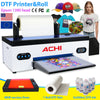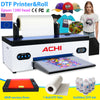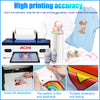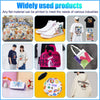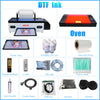ACHI A3 Roll DTF Printer vs. Screen Printing: Which Is Better?
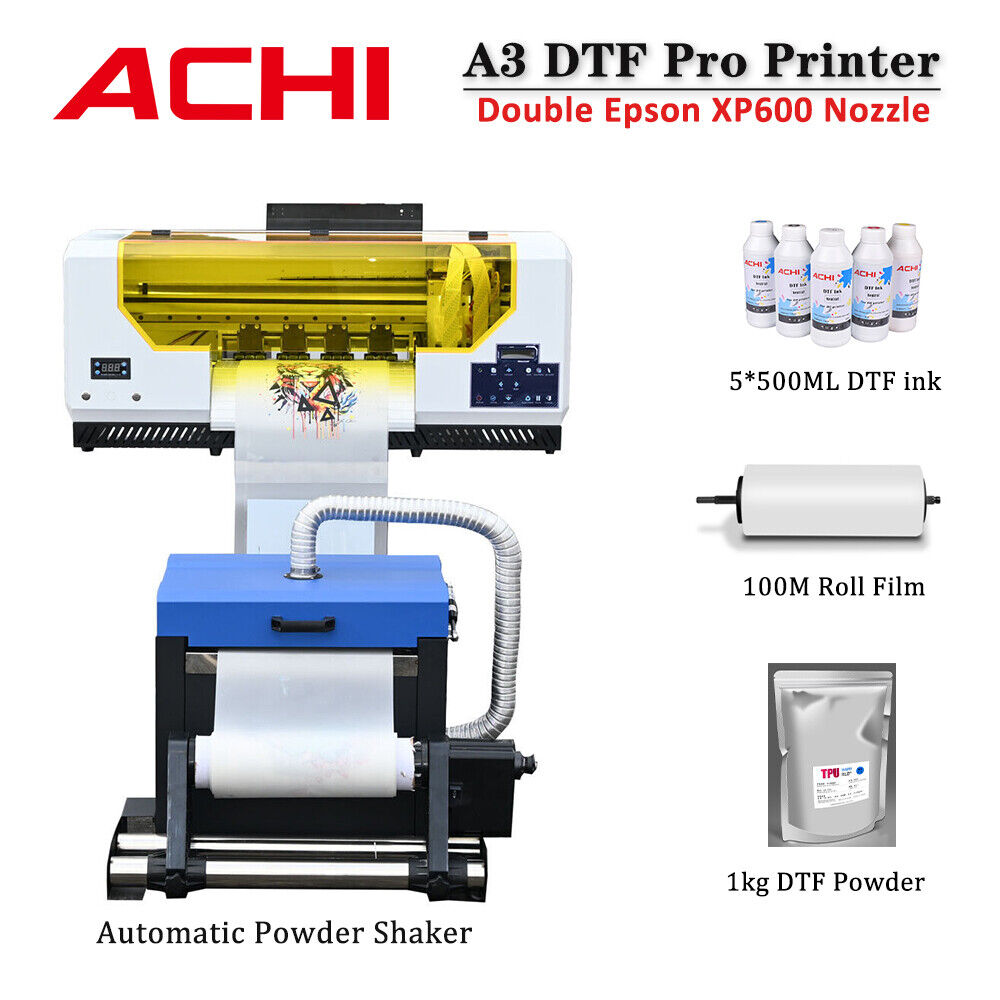
The battle for supremacy in garment decoration often boils down to two key technologies: traditional Screen Printing and the rapidly rising Direct-to-Film (DTF) printing.
Choosing the right method depends heavily on your specific needs, volume, budget, and desired results.
Let's break down the comparison, highlighting how the ACHI A3 Roll DTF Printer positions itself in this landscape.
Fundamental Differences
- Screen Printing: An analog process. Involves creating stencils (screens) for each color in the design, applying ink through these screens onto the garment one layer at a time, and then curing. Excellent for large runs of simple designs with few colors.
- DTF Printing (Using ACHI A3 Roll DTF Printer): A digital process. The design is printed in reverse onto a special PET film using a DTF printer like the ACHI A3, coated with adhesive powder, melted (cured), and then heat-pressed onto the garment. Excels at complex designs, short runs, and mixed fabrics.
Key Comparison Points
-
Setup Time & Cost:
- Screen Printing: High setup cost and time. Requires screen creation for each color ($), emulsion, exposure, washing. Costly and time-consuming for small batches or complex designs.
- DTF (ACHI A3 Roll DTF Printer): Minimal setup. Load the design file, print, powder, cure, press. The ACHI A3 Roll DTF Printer significantly lowers the barrier to entry. Its digital nature eliminates screen costs, making it vastly more economical for short runs, samples, and designs with many colors or gradients. Ideal for on-demand production.

-
Design Flexibility & Complexity:
- Screen Printing: Best suited for simpler designs with limited colors (spot colors). Fine details and photorealistic images are challenging and expensive (requiring high mesh counts/sim process). Each color needs a separate screen.
- DTF (ACHI A3 Roll DTF Printer): Unmatched flexibility. Easily handles full-color CMYK (+White ink) photorealistic images, intricate details, gradients, and small text directly from digital files. The ACHI A3 Roll DTF Printer's ability to print vibrant white ink underneath colors ensures opacity on dark garments, a key advantage over purely CMYK processes. Perfect for complex artwork.
-
Fabric Versatility:
- Screen Printing: Primarily optimized for 100% cotton. Printing on blends, synthetics (like polyester), or dark colors requires specialized inks/techniques (discharge, water-based underbase) which add complexity and cost. Stretchiness can be an issue.
- DTF (ACHI A3 Roll DTF Printer): Superior versatility. The transfer film adheres well to a vast range of fabrics: cotton, polyester, cotton/poly blends, nylon, canvas, leather, and even some performance fabrics. The ACHI A3 Roll DTF Printer's transfers offer good stretchability on fabrics like 50/50 blends without cracking, outperforming many screen prints on non-cotton materials.
-
Production Speed & Scalability:
- Screen Printing: Highly efficient for large, repeat orders once screens are made. High-speed automatic presses handle massive volumes quickly. Economically inefficient for small runs.
- DTF (ACHI A3 Roll DTF Printer): Faster turnaround for small to medium batches due to near-zero setup. While the printing/powdering/pressing steps take time per transfer, the ACHI A3 Roll DTF Printer offers efficient roll-to-roll printing, allowing multiple designs to be printed continuously and processed offline. It scales linearly – double the printers, double the output. Best suited for short runs, customization, and moderate volumes rather than massive bulk runs.
-
Print Feel & Durability:
- Screen Printing: Can achieve a very soft hand feel (especially with plastisol or water-based inks when done well). Generally very durable when cured correctly. Thicker ink layers possible.
- DTF (ACHI A3 Roll DTF Printer): Modern DTF films, especially those produced reliably by printers like the ACHI A3, offer a soft-to-moderate hand feel, significantly improved over early DTG or some thick-transfer methods. Durability is excellent for washing and abrasion when applied correctly with proper heat and pressure. The feel is typically slightly more noticeable than the softest screen prints but less than traditional plastisol transfers.
-
Cost Considerations:
- Screen Printing: High upfront cost (screens, exposure unit, dryer, press). Low per-unit cost for very large runs. High minimum order quantities (MOQs) often required.
- DTF (ACHI A3 Roll DTF Printer): Lower initial investment compared to an automated screen printing setup. Higher per-transfer cost than screen printing for large runs. The ACHI A3 Roll DTF Printer provides an excellent balance, offering professional DTF capability at a manageable entry point. Extremely low MOQs (even 1 piece) with minimal waste. Ink and film costs are manageable.
Why the ACHI A3 Roll DTF Printer Shines in DTF
The ACHI A3 Roll DTF Printer embodies the strengths of DTF technology:
- A3 Roll Format: Handles larger garment sizes and maximizes media usage efficiency.
- Integrated System: Designed specifically for reliable DTF production flow (printing, powdering - often offline, curing).
- Vibrant Output: Capable of producing high-quality, detailed prints with strong white ink for dark garments.
- Ease of Operation: Digital workflow eliminates complex screen setup, lowering the skill barrier.
- Versatility: Opens up decoration possibilities on diverse apparel and substrates.

-
Posted in
DTF printer
